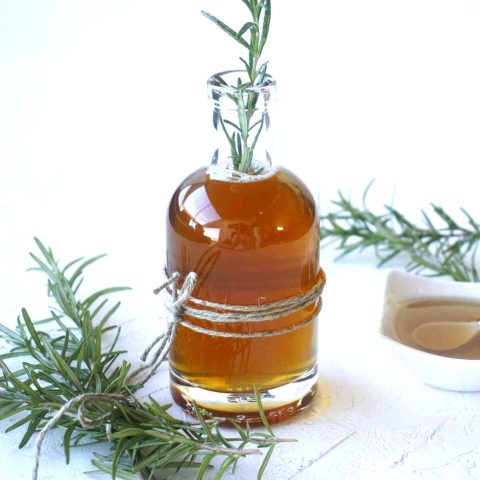Making wild teas from foraged herbs is an easy and affordable way to get the herbal properties into your body and enjoy a warm cup of tasty herbal tisane at the same time.
While herbal tea is made by infusion or decoction of a herb other than the true tea plant ( Camellia sinensis), wild tea refers to herbal teas made of foraged herbs.
Wild tea, also called herbal tisane, is caffeine-free and many of them have medicinal benefits.
Made of foraged herbs wild tea is freely available but requires some foraging and botanical skills.
The making of wild teas is something that unfolds once you start the foraging path. It is a beautiful herbal journey that takes you to the forest, the mountains, or on long walks around lakes and rivers. You will enjoy the fresh air and with wide eyes, you will see all the trees, plants, shrubs, leaves, flowers or even roots.
Brewing your own wild tea is one of the easiest ways to get to know the herbs. Their taste, scent, and texture. You would be surprised how many wild teas you can make for free.
In this post, I will take you through the steps of making your own wild tisane

foraging for wild tea
Making flower herbal tea start with foraging for medicinal plants thus identifying the herbs.
Make sure you are hundred percent certain with the identification, Smell the herb, touch it, use books or other online applications. Don’t be discouraged if you are uncertain. It is a long learning process that is ongoing but rewarding thus patience is required.
Get familiar with the medicinal properties of the herb
Get to know the benefits of each herb. Many herbs have medicinal benefits and it is, therefore, advisable not to drink the tea for a long period of time like several months.

how to dry herbs without a dehydrator
You can use fresh herbal material right after you forage it.
Dried wild herbs have a long shelf life and allow you to enjoy the herbs all year long. However, lose some of its medicinal benefits as well as flavor and aroma.
Air drying is the easiest method that allows you to dry the herbs in 3-4 days depending on the weather. You can simply spread them on parchment paper or use this drying rack.
Tie them together with a string and hang them to dry with a stem. just make sure they don’t lose their color during the drying process as they might turn brown or black and this is not desirable. Better to keep them away from the direct sun
To speed up the process you can use a dehydrator

making tea from herbs
Chose the most suitable method of making a tea
Based on the part of herbs or tree you are using you can go for infusion or steeping. Roots or bark usually require longer steeping time to release their medicinal properties.

Cold infusion
The most friendly method of preparing herbal tea from wild herbs is the cold infusion or cold steeping. This method keeps all nutrients and vitamins, color, and medicinal benefits but requires a longer time.
You simply place the herb in the glass container filled with water. The time of infusion varies depending on the herbs but can range from a few hours to a few days. I prefer to keep it refrigerated to avoid any mold development. Also, tisane prepared with cold infusion tends to be less bitter and more aromatic with higher content of oxidants.
This method also works well when combined with hot steeping. I like to keep the tea overnight to infuse and then just quickly steep it so I can have a warm cup of tea and get a stronger concentration than just steeping.

Steeping cold brew
Steeping is the quickest method to prepare a delicious cup of wild tea. It allows the extraction of the flavor as well as health-promoting compounds from the herbal material when it is done properly.
The most critical is time and temperature when you brew wild herbal tea.

How long to steep herbal teas?
Higher temperatures can destroy some of its valuable ingredients while too short steeping time won’t extract enough antioxidants and flavors.
Dried herbs such as elderflowers or linden blossoms require up to 10 minutes steeping time at 100 C (212 F)
Fresh herbs on the hand need only 5-7 minutes of steeping at 100 C (212 F).
Roots (dandelion root) or bark need a longer time to extract their medicinal properties and therefore 20-30 minutes of steeping time is necessary.
Add some fruity flavors to your tea (optional)
YOu can use wild berries such as raspberries, wild strawberries or pine needles to get a fruity touch.
loose leaf tea accessories
While there are special tools to help you steep tea, you can also keep it simple and still steep like an expert.
If you want to keep it simple your will only need the basics teacup and kettle. However, You can also get some special tools such as tea strainer, disposable tea filtres, tea infuser or tea bag squeezer.
Let’s make some
Herbal Tea Recipes Collection
Discover soothing, healing, and aromatic herbal teas made from fresh or dried herbs. From calming chamomile and lemon balm to immune-boosting elderberry tea, these recipes are easy, healthy, and delicious. Perfect for cozy evenings or natural remedies.
Healing and harmonizing Yarrow has a long history of uses from wound healing to stimulating digestion.
Yarrow tea offers a complete healing action. You can use it topically in a form of tea bath or internally to benefit from its anti-inflammatory and antimicrobial action. This herbal tisane can be used as a gargle for a sore throat or as a warm drink to promote circulation and help clean and detoxify the body.
Elderflowers as well as Elderberries are considered the top antiviral herbs on the planet. While they have the same properties their consistency, color and taste differ. We reach for them when there are complaints of the flu with fever. While elderflowers are blooming at the end of spring their berries ripen in September. This gives you several month protection from flu and viruses. You can also combine the power of elderflowers and elderberries in one simple decoction that makes an intensively flavored and potent infusion.
This soothing and floral rose petal tea is an herbal beverage that is naturally uplifting with many health benefits. Discover all its variations and step-by-step instructions on how to make rose tea delicious.
Linden blooms with pleasantly fragrant creamy-yellow flowers that are the main component of linden flower teatea. However, you can also make it by steeping dried or fresh leaves of linden.
Decoction of linden flowers is a traditional means of sweating for colds and can help as a gargle. You can drink it as a pain reliever for stomach colic and it is also useful for kidney stones. Linden flower and linden leaf tea is very popular and is also a stimulant.
This medicinal violet tea, crafted from wild violets you forage, is one of the best ways to savor these spring flowers, unwind, and boost your health.
Pine tea has a long history of uses that dates back to the 16 century when scurvy was a common illness among sailors. Sailors survived thanks to decoction made of needles and bark from evergreen conifer later identified as "Annedda". This tree became known as the "tree of life" or "arbre de vie" because of its remarkable curative effects.
Pine tea is known for its high content of vitamin C and antioxidants can elevate the mood and contribute to wellbeing. Made of fresh pine needles, pine tea has a pleasant citrusy flavor contains antioxidants that help to limit stress.
Learn how to make dandelion tea with the season and its benefits. You can make this caffeine-free herbal infusion from the dandelion's flowers, leaves, or roots.
Here is how to make Juniper berry tea, a delicious herbal tea made of dried juniper berries that is packed with medicinal benefits.
You can store the wild teas in a storage container or drawstring cotton bags in a cool dry place. Don’t forget to label them.
Alternatively, you can use those press and brew tea bags or this poly lined tea bags that are 100% compostable
What is your favorite cup of wild tea?




















